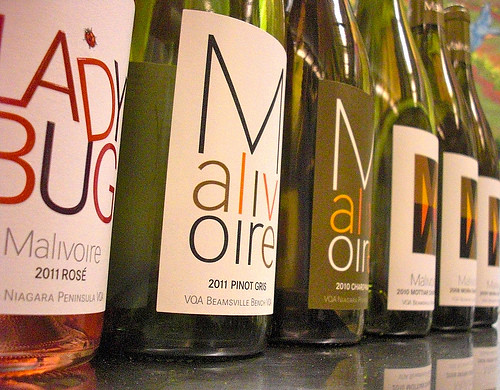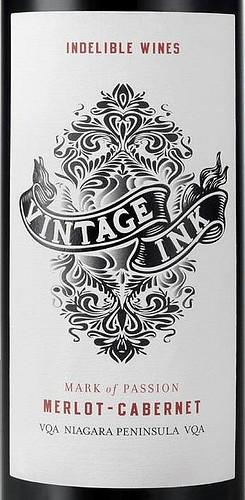
The Cave Spring Vineyard, located high up on a terrace of the Niagara Escarpment overlooking Lake Ontario on the Beamsville Bench, is easily one of Canada’s top three Riesling vineyards.
In 1978, John Pennachetti, Sr. and his son Leonard planted some of Niagara’s first European varietal vines at this vineyard. The site caught their attention for its gentle slope and stony, limestone-rich soils, holding great promise for cool-climate viticulture.
In 1986, together with winemaker Angelo Pavan, the family founded Cave Spring Cellars.
Today, Cave Spring produces its wines from more than 75 hectares of vineyards on the Beamsville Bench and the Twenty Mile Bench of the Niagara Peninsula.
Its signature bottling is the Cave Spring CSV Riesling, which represents the ultimate expression of the estate vineyard’s terroir. It is handcrafted almost exclusively from the oldest vines using approximately the top five per cent of grapes from Cave Spring Vineyard.
The rest of the grapes from the vineyard go into several different bottlings in the Cave Spring family.


So when I heard whispers that Cave Spring was releasing a new label from this historic vineyard I rushed down to the Jordan store to grab a bottle.
It has an intriguing name: Cave Spring The Adam Steps Cave Spring Vineyard Riesling 2011. What’s that? A special block from within the CSV vineyard? Now, that’s exciting.
Thomas Pennachetti, managing partner and the guy in charge of marketing and sales for Cave Spring, confirmed that the new wine is from a single block of Riesling at the estate vineyard, “much like the CSV, which comes from the two oldest blocks of vines,” he said.
“You have to keep in mind that we have over 40 acres and eight different blocks of Riesling at the Estate (not to mention two blocks that we work with on the lakeshore in the Lincoln Lakeshore area).
“The Adam Steps comes from one of two blocks (depending on the year) in the shadows of ‘The Adam Steps’ at Cave Spring Vineyard, which comprise a series of large outcrops in the escarpment above the central/main portion of our vineyard.”
 Pennachetti says the new wine is an exploration of style as much as site, for example, the tension between the natural fruit of Riesling and its acidity.
Pennachetti says the new wine is an exploration of style as much as site, for example, the tension between the natural fruit of Riesling and its acidity.
“It is lower in alcohol than the Estate or CSV Rieslings, with somewhat more residual sugar. Call it more a wine of the push-pull between fruit-sweetness and of lightness than of pure weight and body, which is what the CSV is all about,” he says. “To coin what can be an empty cliché, it’s a little more like a traditional Mosel Riesling than, say, a fuller bodied Pfalz or Rheingau Riesling. It is very much a part from our other two Estate Rieslings.”
The Adam Steps is one of the most exciting new Rieslings I have tried in Niagara. It is made in an unabashedly off-dry style with penetrating acidity that provides balance to the ripe flavours and intricate layers of distinct Beamsville Bench minerality. It is extraordinary in its lightness and defined by its broad flavours that linger on the finish.
And intriguing.
After I started talking about this wine on Twitter and Facebook, I received a number of emails about the mysterious history of the Adam Steps. Niagara winemaker Arthur Harder pointed me to this passage in the book, Mysteries of Ontario, by John Robert Colombo.
“Legends are legion about this rocky tract of land at the foot of the Niagara Escarpment which runs southeast of Beamsville. It was the domain of the Neutral Indians, the farmland of the Loyalist settlers who arrived in 1798.
“The story is told that during the War of 1812 disgruntled soldiers seized the payroll and hid it in these woods. During World War 1, flashing lights on the crest of the Escarpment led local residents to maintain that German spies were planted in the area. In 1948, on a ledge accessible from the Adam Steps, which leads to the top of the Escarpment, archeologist Kenneth E. Kidd uncovered two heads half a foot high carved in living rock. The rock heads showed “protohistoric” features.
“An ‘underground lake’ is said to connect Lake Erie and Lake Ontario. As folklorist William E. Rannie noted, there is ‘the intriguing fact that somewhere on the hillside at Cave Springs there exists today, and perhaps forever, a secret repository holding safe the remnants of a civilization that flourished on these acres long ago.’ ”
Well, quite a story!
And, as I said, quite a wine.
Here’s a roundup of what I’ve tasted lately, including the new Adam Steps, plus what’s being released at Vintages stores Saturday from Niagara:
Cave Spring The Adam Steps Cave Spring Vineyard Riesling 2011 ($25, winery only, 92 points) — Wet pebbles and riverbed minerality is the first impression on the nose then the citrus zest, grapefruit, and summer peach follows. The off-dry sweetness, partially driven by the ripeness of the fruit, is jarring in the mouth as you don’t expect this from Cave Spring. But the honey-sweet flavours are delivered on a racy beam of acidity that presents mouth-watering tension on the palate. The citrus, stone fruits and interesting minerals are clean, fresh, airy and lithe on the palate and the flavours linger on the finish. A beauty.
 13th Street Essence Syrah 2010 ($50, winery, 92 points) — Wow, a lot going on here in this big bruiser of a Syrah. It’s late picked from an already hot vintage, had a long maceration period, underwent malo and was aged in oak, but none of it new. It’s dark, almost opaque in the glass, with an array of aromas including roasted meats, violets, raspberry compote, cracked peppercorns, swirling spices, and earthy-bramble highlights. It’s dense and full-bodied on the palate with 14% alcohol and, at this point, very young and tight. It’s staring to show its beauty; the roasted meats, the cassis notes, plums and rousing array of spices. It has length, power and a full stack of grippy tannins to hold it all together. Needs time, five to 10 years, to smooth out the rough edges. The reward will be great.
13th Street Essence Syrah 2010 ($50, winery, 92 points) — Wow, a lot going on here in this big bruiser of a Syrah. It’s late picked from an already hot vintage, had a long maceration period, underwent malo and was aged in oak, but none of it new. It’s dark, almost opaque in the glass, with an array of aromas including roasted meats, violets, raspberry compote, cracked peppercorns, swirling spices, and earthy-bramble highlights. It’s dense and full-bodied on the palate with 14% alcohol and, at this point, very young and tight. It’s staring to show its beauty; the roasted meats, the cassis notes, plums and rousing array of spices. It has length, power and a full stack of grippy tannins to hold it all together. Needs time, five to 10 years, to smooth out the rough edges. The reward will be great.
13th Street Grand Cuvee 2006 ($60, winery, 92 points) — A very rare sparkling wine for 13th Street, made only two or three times a decade. This wine was produced exclusively from 100% Pinot Noir sourced from two of the winery’s best vineyards in Niagara. The grapes were hand-picked in small bins so no fruit damage would result. In the spring of 2007, the final blend was made and the wine was bottled along with the ‘liqueur de triage,’ a blend of base wine, yeast, yeast nutrients and sugar. The ‘prise de mousse’ or sparkle was then created and trapped in the bottle. After the secondary fermentation, the spent yeast cells remained in contact with the wine for an aging period of more than 4.5 years. This wine was disgorged in September of 2011 after mechanical riddling in gyropalettes and a miniscule dosage of less than 1 gram of sugar was added. The wine was then rested in bottle for a further 9 weeks before release. What a thrilling sparkler! The nose shows biscuit, yeast, poached pear, orange blossom, baked apples, crème brûlée and minerality. The mousse is energetic and crackling in the glass and the flavours are toasty, creamy, rich and complex on the palate. A solid base of vibrant acidity lifts the fruit and urges sip after sip of this elegant and delicious top-drawer sparkler.
Chateau des Charmes Old Vines Riesling 2010 ($17, Vinrtages March 30, winery, on-line and boutiques now, 89 points) — This wine is the follow up vintage to the wonderful 2008 Old Vines Riesling. The wine wasn’t made in 2009. The grapes were selected from vines that are 20-30 years old, the oldest sourced from the Paul Bosc Estate Vineyard. It shows a beautiful nose of ripe citrus, apple blossom, grapefruit, touches of ginger and flinty minerality and displays the ripeness of the vintage. It has good bite on the palate from fairly lively acidity and displays brilliantly the apple-citrus fruit, the underlying spice note and crisp finish. Can age for two or three years.
Coyote’s Run Pinot Noir 2010 ($20, LCBO, winery, 88 points) — Built at a pretty good price for top-quality Pinot in Niagara, this basic-tier version shows the ripe fruit of the vintage with black cherry, cassis, bramble, roasted Espresso bean, sandalwood and earth. The fruit is smooth and juicy on the palate with ripe tannins and decent acidity to balance it all out. Nothing too complicated here yet not simple either; just a good, honest Pinot from a very good vintage.
Vintages releases Saturday:

Malivoire Pinot Gris 2011 ($20, 87 points) — A ripe and bold nose of melon, blood orange, peach, ripe summer apples and an interesting note of fennel. It’s very friendly on the palate with bold orchard fruits balanced out by zesty citrus notes.

Tawse Gamay 2011 ($19, 89 points) — A nose of pure raspberry fruit with cherry accents and subtle forest floor. It’s delightfully fresh and soft on the palate with juicy red fruits, light oak and a lick of licorice on the finish. The ultimate porch sipper? Yes.
 Vintage Ink Mark of Passion Merlot-Cabernet 2010 ($18, 88 points) — The fruit (Merlot, Cab Franc and Cab Sauv) was sourced from vineyards both on the Beamsville Bench and in the lowlands of Niagara-on-the-Lake. The wine was aged for 16 months in oak. It has a powerful nose of cassis, blackcurrants, black cherry, roasted herbs and spice. It’s round on the palate and explodes with ripe black fruits and expressive spices. Very smooth delivery.
Vintage Ink Mark of Passion Merlot-Cabernet 2010 ($18, 88 points) — The fruit (Merlot, Cab Franc and Cab Sauv) was sourced from vineyards both on the Beamsville Bench and in the lowlands of Niagara-on-the-Lake. The wine was aged for 16 months in oak. It has a powerful nose of cassis, blackcurrants, black cherry, roasted herbs and spice. It’s round on the palate and explodes with ripe black fruits and expressive spices. Very smooth delivery.
Also being released but not reviewed:
• Fielding Estate Viognier 2011 ($26)
• Henry of Pelham Barrel Fermented Estate Chardonnay 2011 ($20)
• Southbrook Vineyards Triomphe Chardonnay 2011 ($22)
• Stratus Gewurztraminer 2011 ($30)
• Sue-Ann Staff Loved By Lu Riesling 2011 ($17)
• Kacaba Wismer Vineyard Pinot Noir 2008 ($23)
• Konzelmann Heritage 2010 ($25)
• Malivoire Stouck Cabernet Merlot 2010 ($30)







Comment here